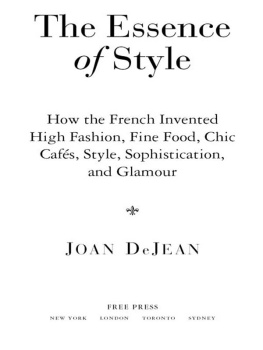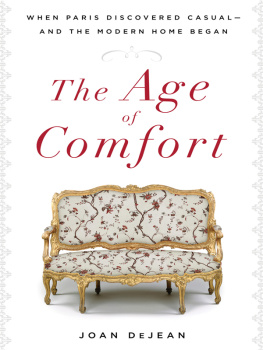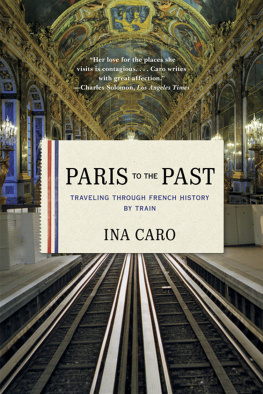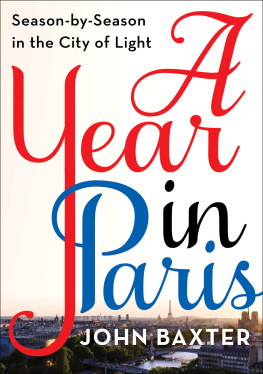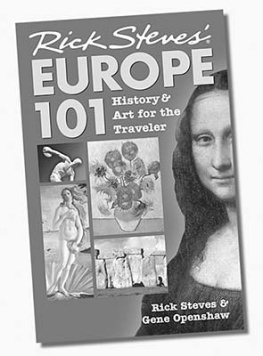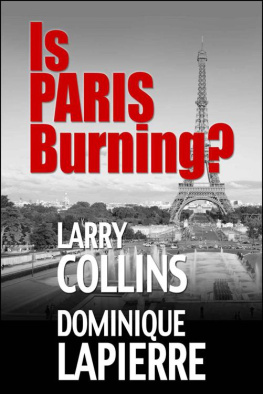Joan DeJean - How Paris Became Paris
Here you can read online Joan DeJean - How Paris Became Paris full text of the book (entire story) in english for free. Download pdf and epub, get meaning, cover and reviews about this ebook. year: 2014, publisher: Bloomsbury Publishing, genre: History. Description of the work, (preface) as well as reviews are available. Best literature library LitArk.com created for fans of good reading and offers a wide selection of genres:
Romance novel
Science fiction
Adventure
Detective
Science
History
Home and family
Prose
Art
Politics
Computer
Non-fiction
Religion
Business
Children
Humor
Choose a favorite category and find really read worthwhile books. Enjoy immersion in the world of imagination, feel the emotions of the characters or learn something new for yourself, make an fascinating discovery.

- Book:How Paris Became Paris
- Author:
- Publisher:Bloomsbury Publishing
- Genre:
- Year:2014
- Rating:5 / 5
- Favourites:Add to favourites
- Your mark:
- 100
- 1
- 2
- 3
- 4
- 5
How Paris Became Paris: summary, description and annotation
We offer to read an annotation, description, summary or preface (depends on what the author of the book "How Paris Became Paris" wrote himself). If you haven't found the necessary information about the book — write in the comments, we will try to find it.
How Paris Became Paris — read online for free the complete book (whole text) full work
Below is the text of the book, divided by pages. System saving the place of the last page read, allows you to conveniently read the book "How Paris Became Paris" online for free, without having to search again every time where you left off. Put a bookmark, and you can go to the page where you finished reading at any time.
Font size:
Interval:
Bookmark:
The Age of Comfort: When Paris Discovered Casualand the
Modern Home Began
The Essence of Style: How the French Invented High Fashion,
Fine Food, Chic Cafs, Style, Sophistication, and Glamour
The Reinvention of Obscenity: Sex, Lies, and Tabloids
in Early Modern France
Ancients Against Moderns: Culture Wars and the Making
of a Fin de Sicle
Tender Geographies: Women and the Origins
of the Novel in France
Fictions of Sappho, 15461937

Also Available from Joan DeJean
The Queens Embroiderer:
A True Story of Paris, Lovers, Swindlers, and the First Stock Market Crisis
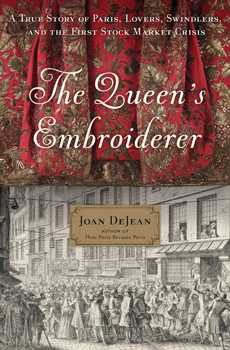
From celebrated author Joan DeJean comes a sweeping history of high finance, the origins of high fashion, and a pair of star-crossed lovers in eighteenth-century France.
Paris, 1719. The stock market is surging and the worlds first millionaires are buying everything in sight. Against this backdrop, two families, the Magoulets and the Chevrots, rose to prominence only to plummet in the first stock market crash.
Following these families from 1600 until the Revolution of 1789, Joan DeJean recreates the larger-than-life personalities of Versailles, where displaying wealth was a power game; the sordid cells of the Bastille; the Louisiana territory, where Frenchwomen were forcibly sent to marry colonists; and the legendary Wall Street of Paris, Rue Quincampoix, a world of high finance uncannily similar to what we know now. The Queens Embroiderer is both a star-crossed love story in the most beautiful city in the world and a cautionary tale of greed and the dangerous dream of windfall profits. And every bit of it is true.
A fascinating true story based on formidable detective work in the archives. Valerie Steele, Director and Chief Curator, Museum at the Fashion Institute of Technology
The tale of two 17th- and 18th-century French families, a story that begins as a fairy tale and ends as a nightmare. Kirkus Reviews
A tale of intrigue and finance in 18th-century France. And what a story it is! If your plans for springtime in France havent materialized, dont despair. Just open The Queens Embroiderer and youll find yourself transported. BookPage Online
Copyright 2014 by Joan DeJean
All rights reserved.
You may not copy, distribute, transmit, reproduce, or otherwise make available this publication (or any part of it) in any form, or by any means (including without limitation electronic, digital, optical, mechanical, photocopying, printing, recording, or otherwise), without the prior written permission of the publisher. Any person who does any unauthorized act in relation to this publication may be liable to criminal prosecution and civil claims for damages. For information address Bloomsbury USA, 1385 Broadway, New York, NY 10018.
Published by Bloomsbury USA, New York
Bloomsbury is a trademark of Bloomsbury Publishing Plc
LIBRARY OF CONGRESS CATALOGING-IN-PUBLICATION DATA
DeJean, Joan E.
How Paris became Paris : the invention of the modern city / Joan DeJean. First U.S. edition.
pages cm
Includes bibliographical references and index.
1. Paris (France)History17th century. 2. Paris (France)Description and travel. 3. Paris (France)Social life and customs17th century. 4. Paris (France)GuidebooksHistory17th century. 5. City planningFranceParisHistory17th century.
I. Title.
DC729.D39 2014
944'.361033dc23
2013031527
eISBN: 978-1-62040-113-2
First U.S. Edition 2014
This electronic edition published in March 2014
To find out more about our authors and books visit www.bloomsbury.com. Here you will find extracts, author interviews, details of forthcoming events and the option to sign up for our newsletters.
MORE PARISIAN HISTORY FROM JOAN DEJEAN
THE AGE OF COMFORT
When Paris Discovered Casualand the Modern Home Began

A New York Times Notable Book for Art and Architecture
A book that will surprise, amuse, and gently educate. In fact its just the thing to curl up with inwhat else?an easy chair. ElleDecor.com
It may seem strange to think of the sofa as an agent of cultural change. Yet The Age of Comfort... shows how it not only helped transform the way homes were designed but also struck a blow to longstanding norms of social order. The New York Times
Available everywhere in paperback and as an eBook.
Paperback ISBN: 978-1-60813-230-4
eISBN: 978-1-60813-135-2
www.bloomsbury.com
In memory of
Fannie DeJean Genin (19242012),
who never made it to Paris but would have loved it.
Capital of the Universe
The Bridge Where Paris Became Modern: The Pont Neuf
Light of the City of Light: The Place des Vosges
Enchanted Island: The le Saint-Louis
City of Revolution: The Fronde
The Open City: The Boulevards, Parks, and Streets of Paris
City of Speed and Light: City Services That Transformed Urban Life
Capitale de la Mode
City of Finance and New Wealth
City of Romance
Making the City Visible: Painting and Mapping the Transformation of Paris
This project began with paintings: the numerous views that depict the new monuments of seventeenth-century Paris. I chose black-and-white details from these early views of the city to illustrate all chapters. Some of the most important of these canvases are also reproduced in color. These images provide a vivid introduction to Paris as it appeared in the seventeenth century to those who watched its invention unfoldand to Paris as they wanted it to be seen by the world outside.
References for all quotations as well as references to relevant secondary sources can be found at the end.
Capital of the Universe
What makes a city great?
Prior to the seventeenth century, the most celebrated European city was one famous for its past. Visitors made pilgrimages to Rome to tour its ancient monuments or its historic churches: they were seeking artistic inspiration and indulgences rather than novelty and excitement. Then, in the seventeenth century, a new model for urban space and urban life was invented, a blueprint for all great cities to come. The modern city as it came to be defined was designed to hold a visitors attention with quite different splendors: contemporary residential architecture and unprecedented urban infrastructure rather than grand palaces and churches. And this remade the urban experience for both the citys inhabitants and its visitors alike. The modern city was oriented to the future rather than the past: speed and movement were its hallmarks.
And, as many Europeans quickly recognized, only one city was truly modern: Paris.
Near the end of the seventeenth century, a new kind of publication began to appear: pocket guidebooks and maps specifically designed for visitors who planned to explore a city on foot. These ancestors of todays guidebooks were created to introduce Europeans to Paris. It was a city that, their authors felt, had become such a revolutionary kind of place that it needed to be seen in this way to be understood. The genre began in 1684 with the first edition of Germain Brices
Font size:
Interval:
Bookmark:
Similar books «How Paris Became Paris»
Look at similar books to How Paris Became Paris. We have selected literature similar in name and meaning in the hope of providing readers with more options to find new, interesting, not yet read works.
Discussion, reviews of the book How Paris Became Paris and just readers' own opinions. Leave your comments, write what you think about the work, its meaning or the main characters. Specify what exactly you liked and what you didn't like, and why you think so.

